The Ultimate Guide to Digital Onboarding for Banking

The Ultimate Guide to Digital Onboarding for Banking: A Comprehensive Guide
As the digital age continues to reshape how we interact with banking, digital onboarding has become integral for providing customers a simplified and secure process. With this ultimate guide on ‘digital onboarding in banking’, you can explore all that it entails from importance to best practices, innovative tools and future trends. Get ready as we dive into the realm of modern-day banking!
Key Takeaways
- Digital onboarding is essential for financial institutions to provide a user-friendly experience, streamline operations, acquire and retain customers, and comply with regulatory requirements.
- Banks should prioritize customer centricity, data security & privacy while leveraging automation & AI technologies in order to successfully implement digital onboarding.
- Emerging trends such as blockchain technology, open banking APIs & advanced analytics are set to influence digital onboarding processes for banks.
The Importance of Digital Onboarding in Banking
With the banking industry revolutionizing digital transactions, oboarding proceses have become essential for financial institutions. Such processes must be user-friendly and provide customers with a seamless experience while complying to regulatory requirements in order to acquire and retain users. Banks are placing immense importance on building effective digital onboarding platforms which will prove beneficial when dealing with customer needs.
This type of online orientation is key as it assists these organizations in streamlining their operations across all levels from beginning through completion within the banking sector making sure that each step ensures accuracy throughout its process..
Customer Acquisition and Retention
In today’s banking industry, acquiring and maintaining customers is paramount. A successful digital onboarding process that offers personalization and ease-of-use for new customers promotes loyalty from them as well. If their expectations are not fulfilled or the procedure of signing up proves to be difficult, they may turn away from banks entirely. To enhance this experience for users within the framework of banking services. Features such as gamification, social media integration and a user friendly interface can lead to better customer retention with higher conversion rates thanks to improved satisfaction levels overall. We suggest you to use lead scoring to improve your understanding of customer acquisition.
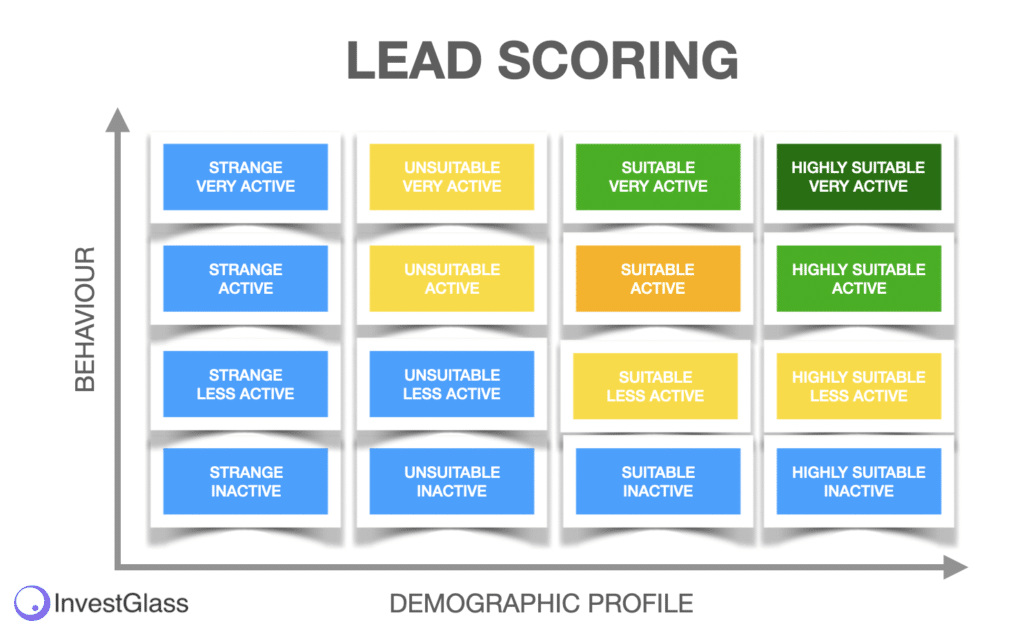
Regulatory Compliance for a smooth onboarding
For any financial institution, satisfying the complex array of regulations can be daunting. Regarding digital onboarding processes, adherence to Know Your Customer (KYC) and Anti-Money Laundering (AML) guidelines is essential for preventing fraud and laundering while avoiding possible penalties or reputation harm.
A proper use of a good digital onboarding system supplies banks with many advantages: smooth customer experience, identity verification, improved regulatory compliance management as well as anti money laundering detection features. All these qualities improve the customer journey through protecting both themselves from wrongdoing but also their bank institutions from liability issues in case they would occur in relation to AML & KYC negligence regarding onboardings process itself
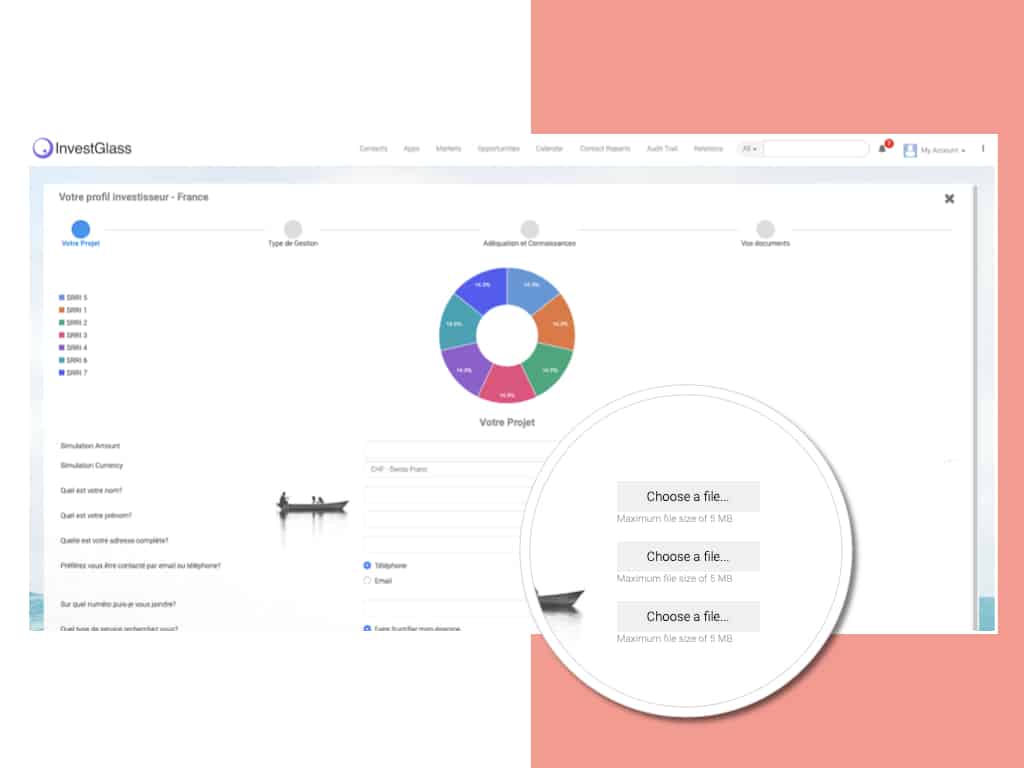
Streamlining Operations
The advantages of using digital onboarding for customer acquisition, compliance and resource optimization are numerous. Enhanced operational efficiency leads to cost savings which translates into a greater bottom line profit. This method of onboarding creates an improved experience for customers while enabling banks to prioritize higher-value services in the ever changing financial market space. Customer onboarding with digital technology is paving the way forward towards modernization and innovation within this field.
Key Components of an Effective Digital Onboarding Process
Once it has been determined the necessity of digital onboarding in banking, let’s look at the key features which constitute an effective process. A successful procedure should consist of a navigable platform, robust identity authentication and personalized experiences adapted to each customer’s individual needs and preferences. To achieve this objective successfully, implementing digital onboarding is vital for banks so they can guarantee secure yet engaging procedures that meet all customers’ demands efficiently. Focusing on these fundamental aspects enables financial institutions to ensure consistent hassle-free processes for their clients during onboarding as well as afterwards.
User-Friendly Interface
An intuitive, user-friendly interface is essential for any effective digital onboarding process. Providing customers with an uncomplicated and accessible platform allows the onboarding to be completed quickly without hitches or impediments. A carefully designed interface can result in a positive customer experience. Encouraging users to finish the procedure which then leads to increased customer loyalty probabilities.
To sum up: A convenient user-interface is imperative if you want your bank’s onboarding journey to run smoothly and bring success both for clients as well as yourself.
Identity Verification and Liveness Detection
In our digitally-connected world, the security of customer data and prevention against fraud is a top priority. Verifying identities with liveness detection are integral components in establishing an effective digital onboarding process so as to prevent unauthorized access to confidential information. We cooperate with Sumsub, Onfido, ID Now, Yoti, Credas and many other fintech offer top notch solutions.
By utilizing advanced technologies such as biometric authentication, machine learning algorithms and AI analytics tools, banks can improve their identity verification procedures while still providing customers with secure yet hassle-free online onboarding experience.
Personalized Onboarding Experience
Providing customers with a tailored onboarding experience is crucial for delivering an engaging and enjoyable journey. With the aid of customer data, banks can create personalize processes to accommodate each person’s individual needs and preferences – leading not only to improved user satisfaction but also allowing them to form long-lasting relationships with their clients. This personalisation is possible thanks to a intuitive rule based – automation solution directly connected to the CRM.
By using sophisticated analytics and customisation tools while emphasising on the consumer first, banking institutions are able stay ahead in this highly competitive environment.
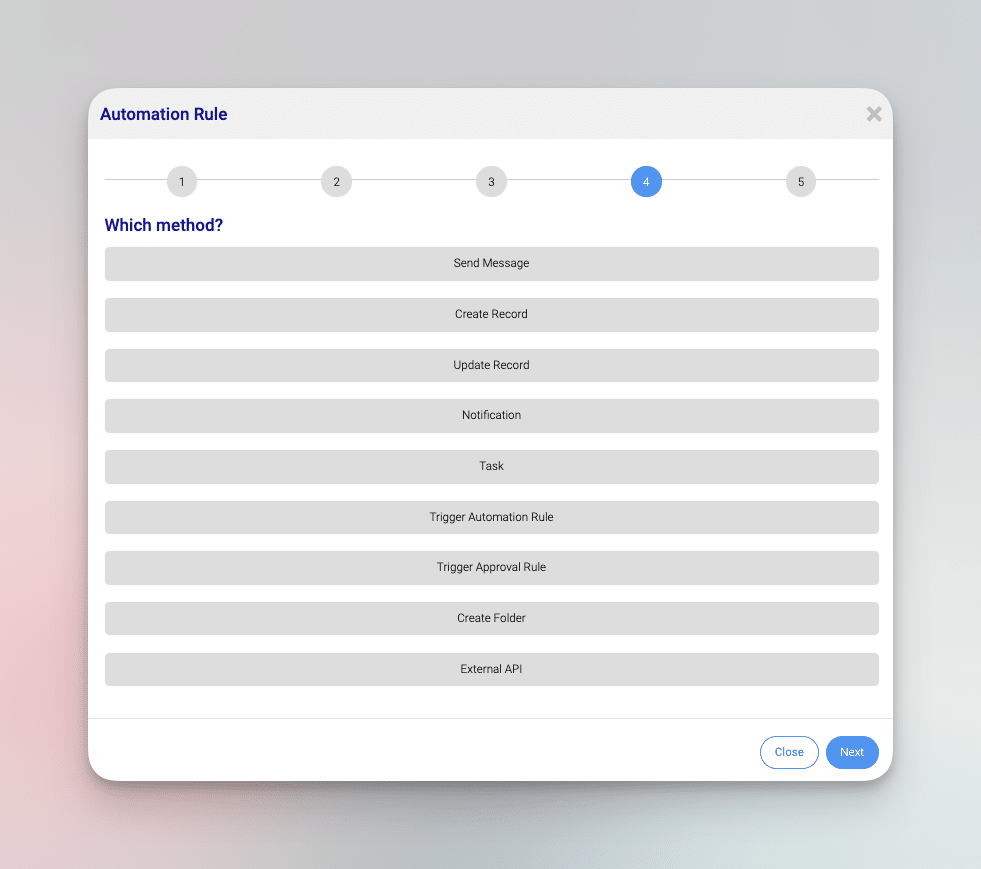
Best Practices for Implementing Digital Onboarding in Banking
When it comes to digital onboarding in the banking sector, understanding its core elements is paramount for ensuring an effective and successful process. Banks need to take a customer-focused approach while also emphasizing data security, privacy standards and automation tools like Artificial Intelligence.
These best practices will help banks overcome any obstacles associated with their digital onboarding program while providing customers with enhanced protection along with a positive experience when signing up for services or products they are offering.
Adopting a Customer-Centric Approach
The customer onboarding process is crucial in any successful digital banking experience. Having a dedicated focus on customers’ needs and preferences ensures that the journey for them from sign-up to completion of the service is both effective as well as engaging and enjoyable. This involves: ascertaining what their individual requirements are, customizing products accordingly, then offering personalised assistance along each step they take through this enrollment procedure.
By making sure customer centricity comes first when it comes to such processes banks can heighten client satisfaction levels. Create stronger loyalty ties with them while simultaneously developing within an ever more competitive industry landscape at large.
Ensuring Data Security and Privacy
Securing consumer information is an integral part of digital onboarding in banking. Guaranteeing security and privacy not only helps protect private financial details, but also creates a strong level of trust between banks and their customers. To attain this goal, banks should implement secure authentication measures such as biometric recognition, encryption technologies, and two-factor authentication processes.
They must adhere to necessary data protection rules like GDPR for safeguarding customer’s personal details while avoiding penalties or damage to reputation which may arise from any violation of the regulations related to data safety procedures during the bank’s onboarding process .
Leveraging Automation and AI Technologies
Digital onboarding processes can be greatly improved by incorporating automation and AI technologies. These advancements are able to streamline certain tasks, reduce the potential for manual errors while simultaneously enhancing customer experience. Automating common activities such as account balance inquiries and password resets lets banks move their customer service representatives on to handling more complex issues.
AI also has applications when it comes to detecting fraudulence, optimizing investments as well as predicting future market trends alongside providing individualized experiences through chatbots or virtual assistants respectively – all of which result in increased levels of operational efficiency together with higher satisfaction from customers. Thus automated digital onboarding is fundamental for modern banking operations if they wish to ensure a successful outcomes in terms of both performance quality plus client support overall..
Overcoming Challenges in Digital Onboarding
The digital onboarding process offers banks and customers numerous advantages, but it also presents a range of challenges. In order to make sure the journey runs smoothly with no issues around security or user experience, compliance standards must be adhered to as well as allowing integration with existing systems. It is essential that all financial institutions address these hurdles in such a way so they can ensure their digital onboarding process provides maximum benefit for everyone involved, both bank users and the organization itself.
Regulatory Compliance
Digital onboarding is an essential component of any effective business strategy, with the importance of ensuring compliance to regulatory requirements like KYC and AML at its core. Banks need powerful identity verification tools coupled with advanced technologies such as biometric authentication and machine learning in order to maintain their own legal standards while also protecting customers from potential financial threats including money laundering.
By taking a proactive approach towards meeting these various regulations, banks are able to make sure customer experience during onboarding runs smoothly without comprising overall security or undermining compliances laws in place. This way all parties involved can benefit from a successful digital onboarding process tailored according their specific needs.
In today’s world, digital transformation has become a critical aspect of the financial sector. One area where this is particularly evident is in the client onboarding process. The use of digital platforms and digital tools has significantly streamlined this process, making it more efficient and customer-friendly.
InvestGlass, a digital customer onboarding tool, has been designed with these needs in mind. It is particularly suited for compliance in Switzerland, European, and Middle East countries. It provides an effective onboarding process that helps to reduce customer churn and increase retention rates.
The tool is integrated with the bank’s mobile banking app, allowing new users to complete so many banking transactions in an efficient manner. It simplifies the process of creating a new account, verifying the customer’s identity through ID verification, and ensuring compliance with compliance regulations.
By reducing friction points in the customer onboarding experience, InvestGlass not only enhances customer experiences but also helps banks stay compliant. This is particularly important in the financial sector where regulations are ever-changing and stringent.
InvestGlass also adds an additional layer of security by ensuring that all financial information provided by new clients is securely stored and protected. It is designed to meet the needs of the target audience and provide them with a seamless onboarding process.
Integration with Legacy Systems
For customers to have an uninterrupted onboarding process, banks must successfully integrate digital onboarding solutions with existing systems. This is a challenge due to legacy banking operations and their potentially outdated technology base but it remains essential for smooth operation.
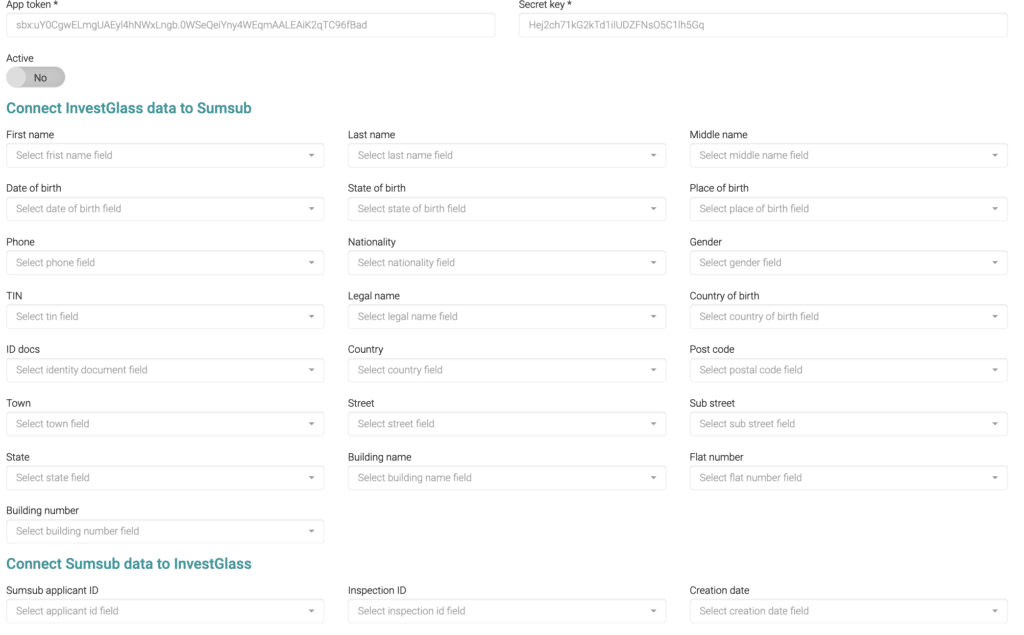
Automation and AI can be used in order to maximize interoperability of the disparate technologies so that this integration can occur easily between modernity and tradition thus providing a seamless experience when boarding new customers into the system. Banks should focus on delivering comprehensive customer satisfaction during these processes which goes beyond offering just a basiconboarding solution but instead something wholly more satisfying as every step taken towards completion has been considered from both sides, technological advancement while also respecting legacies left by years gone past through effective amalgamation techniques.
Balancing Security and User Experience
Finding harmony between security and a pleasant user experience is vital for any digital onboarding process. Banks need to implement secure authentication measures, like biometrics and two-factor verification, while at the same time providing an easygoing customer encounter that motivates customers to finish the procedure. Establishing this balance guarantees banks’ processes are both protected and satisfying for all their clients’ needs when it comes to Digital Onboarding Processes. All in all, giving consumers with good data protection as well as simple access greatly improve both trustworthiness of customer data along with satisfaction from customers regarding these kinds of processes.
Innovative Tools and Technologies for Digital Onboarding
As the banking industry advances through a digital revolution, new tools and technologies are appearing to Enhance digital onboarding. These leading-edge options include biometric authentication, machine learning algorithms and CRM platforms such as InvestGlass.
By taking advantage of these revolutionary methods banks can strengthen security measures while streamlining their operations and providing clients with an improved and smoother onboarding process altogether.
In our ultimate guide to digital onboarding for banking, we’ve highlighted the importance of a user-friendly interface, efficient manner of operation, and secure ID verification. One solution that ticks all these boxes is InvestGlass. This digital customer onboarding tool is designed to streamline the customer onboarding process for financial institutions.
InvestGlass offers a unique solution that can be hosted on the bank’s premise, providing a seamless integration with existing systems. This tool aids in reducing customer churn by offering a smooth and efficient onboarding process. The platform is designed with a user-friendly interface that allows new customers to open a new account in an efficient manner.
The tool also ensures compliance with Know Your Customer (KYC) regulations by incorporating liveness detection and ID verification features. This not only helps in preventing fraud but also in protecting the confidential information of new clients.
InvestGlass is built to provide a seamless customer journey, reducing friction points in the onboarding process, and making it more customer-friendly. It is designed to meet the needs of the target audience, thus increasing conversion rates.
In a rapidly evolving banking industry, having a tool like InvestGlass can greatly enhance the digital onboarding experience for both the bank and its clients. This comprehensive guide underscores the importance of adopting such advanced processes in the banking sector for a successful client onboarding experience.
Biometric Authentication with new customers
Biometric authentication like fingerprint scanning and facial recognition is becoming a widely accepted practice to ensure the security of customer information while making identity verification simpler. Adopting biometric technology into digital onboarding procedures allows banks to provide customers with an easy-to-use experience, To preventing fraudulence or unauthorized access.
It’s anticipated that its acceptance will expand in banking as this form of tech continues developing, thus Increasing safety and convenience during digital processes involving signup for services/products.
InvestGlass has connection with SUMSBUB and ONFIDO as well.
Machine Learning and AI for investors
nvestGlass provides state-of-the-art investment tools tailored for financial advisors. With these tools, advisors can offer swift and pertinent advice to each client on an individual basis. “Leveraging Machine Learning and AI for Financial Advisory
The realm of finance stands at the threshold of elevating its digital onboarding experience through the power of machine learning and AI. By integrating features like virtual assistants and chatbots, financial institutions can personalize the onboarding journey for each client, simultaneously boosting operational efficiency. These smart algorithms can identify potential fraud or forecast investment shifts, delivering insights that benefit both the financial entities and their clientele. As AI continues to evolve, its contribution to refining the digital onboarding process in the banking sector becomes increasingly evident.
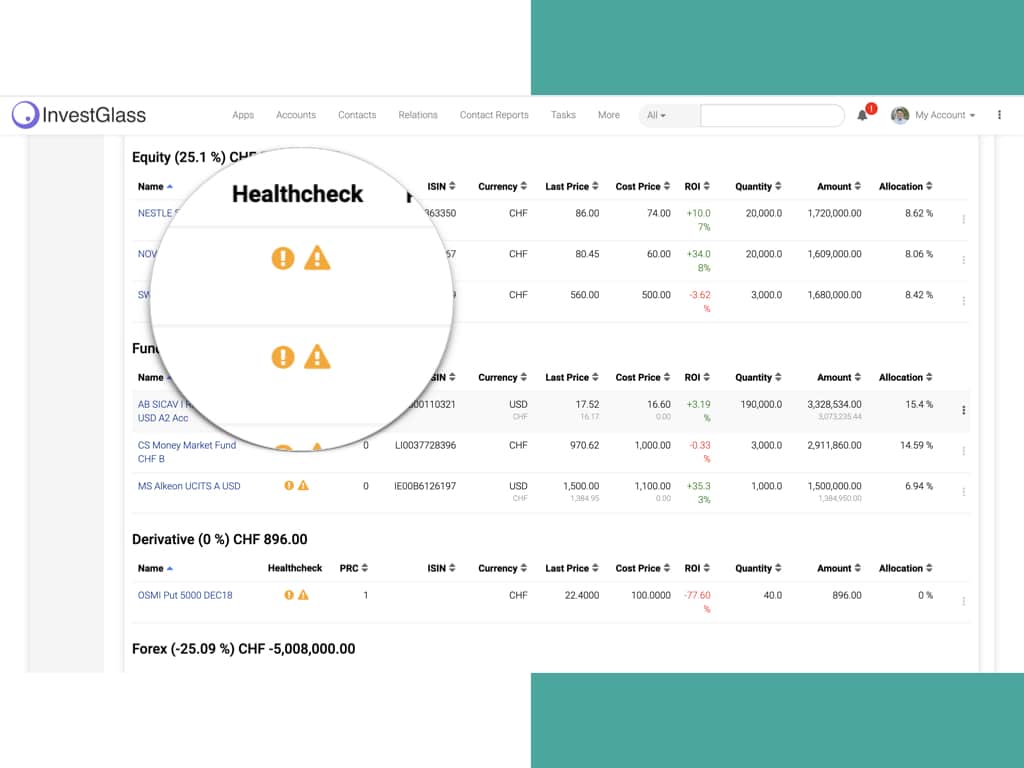
CRM Software and Platforms
CRM platforms, such as InvestGlass, can provide comprehensive solutions for building customer relationships and refining onboarding processes to better serve customers. Banks are able to get insights into their customers’ wants and needs through this software, enabling them to structure the appropriate onboarding procedures that help improve efficiency while automating tasks. This results in a much more convenient customer experience when beginning with the bank’s services. Making CRM solutions indispensable within the banking sector today.
The digitalisation of our modern-age has made way for Development of CRM tools leading banks from all over increasingly incorporate these advancements – offering smoother systems than ever before – which means an even greater enhancement in terms of customer satisfaction during their initial integration period or ‘onboarding’.
Case Studies: Successful Digital Onboarding Implementations in Banking
By utilizing digital onboarding solutions in banking, the customer experience can be significantly improved and streamlining of account opening with efficient compliance & risk management is possible. To provide greater insight into how this has been done successfully, let us explore some practical case studies to highlight the benefits and best practices associated with digital onboarding for banks.
Bank A: Streamlined Account Opening
By employing digital technologies and automation, Bank A was able to implement an effective user-friendly digital onboarding solution for their banking services. The advantages were visible in the form of streamlining account opening processes, higher conversion rates, reducing paperwork as well as increased operational efficiency ultimately leading towards better customer experience during onboarding.
This case study serves to show how substantial improvements can be made when utilizing a modernized digital platform within the financial industry that puts customers first with its improved process and more enjoyable experiences overall.
Bank B: Enhanced Customer Experience through Personalization
By utilizing customer data and insights, Bank B was able to personalize the onboarding process in order to create a customized experience for each of its clients. This tailored approach not only raised satisfaction levels among customers but also led to stronger connections between them and the bank. Thus improving overall customer experience as well as strengthening loyalty.
Bank C: Improved Compliance and Risk Management
Bank C found a way to improve their risk management and compliance by implementing an effective digital onboarding process, complete with identity verification measures as well as fraud detection capabilities. This enabled the company to meet all regulatory requirements while providing its customers with fast and secure access to services through the smooth online onboarding experience.
The importance of embracing such advanced technology for account activation is highlighted in this case study. It allows banks protect themselves against potential money laundering activities, but also offers protection from related risks for clients when enrolling digitally into different banking products or services offered.
Future Trends in Digital Onboarding for Banking
For the future, digital onboarding for banking will be shaped by various developments including blockchain technology adoption, open banking APIs and using advanced analytics to personalize services. To stay ahead of these upcoming trends allows banks to Improve their processes related to getting customers set up digitally while also providing additional security measures. This ultimately results in a more seamless and enjoyable experience overall from start-to-finish when it comes to onboarding with any given bank. The future is also ChatGPT.
InvestGlass has integrated an advanced ChatGPT service into their platform, revolutionizing the way bankers advise their clients. This automated chatbot service accelerates the advisory process, allowing bankers to respond promptly and effectively to client inquiries. Moreover, by streamlining communication and reducing manual intervention, it significantly enhances the overall efficiency of banking operations.
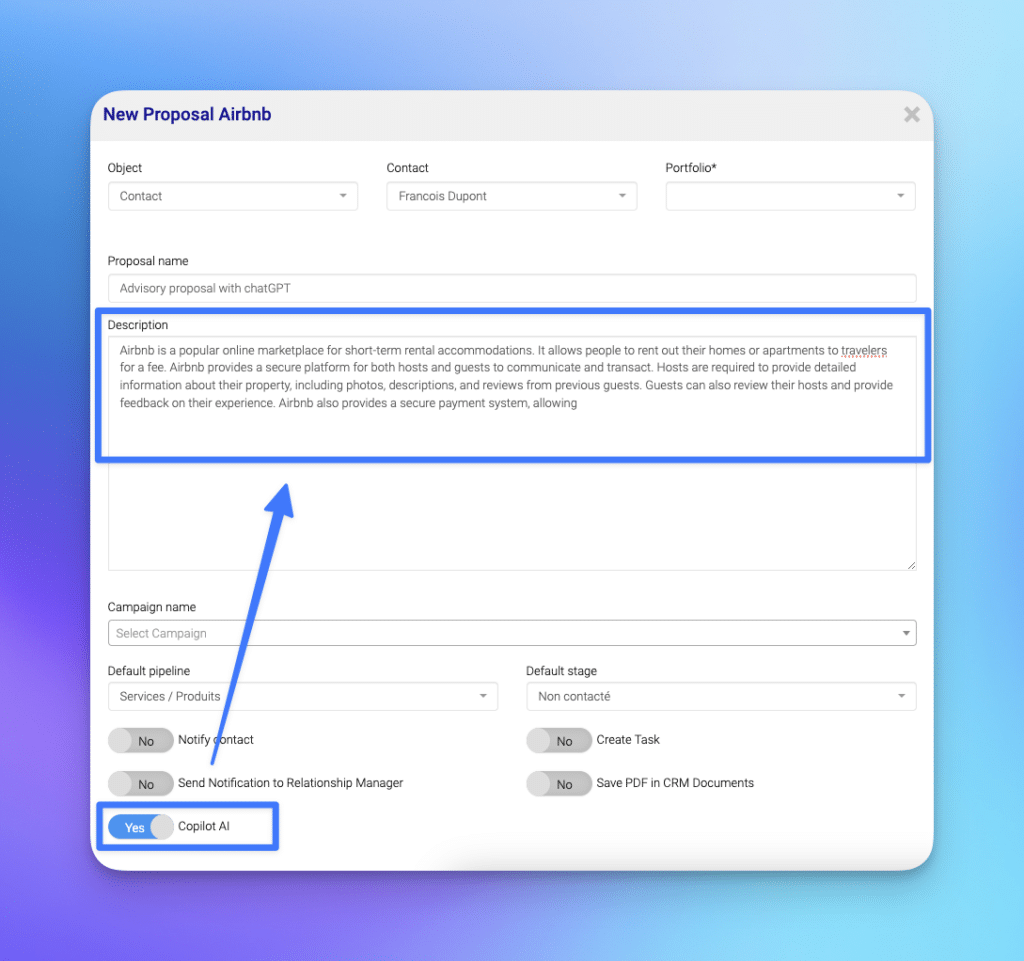
Blockchain Technology and crypto
As blockchain technology Develops, it is becoming an increasingly popular option in the banking industry to enhance and streamline digital onboarding processes. Utilizing a distributed ledger system can help guarantee security of transactions while eradicating any intermediaries. This would also keep permanent records of all pertinent information giving users greater transparency during these procedures.
Overall this transformation due to blockchain will introduce more efficiency into onboarding process as well as improved safety measures, leading towards safer financial operations by providing authenticated data that cannot be tampered with easily or altered unintentionally .
Open Banking APIs
Open banking APIs will have a big effect on the digital onboarding process of banks in the near future. By connecting securely and integrating with external providers, customers are provided an enhanced seamless experience that is tailored to their individual needs. With open banking API integration, operations become more efficient and cost-effective for both customer and bank alike. As this technology becomes increasingly adopted it’s influence within online onboarding continues to expand.
Advanced Analytics and Personalization
As digital onboarding in the banking industry grows, so too will advanced analytics and personalization approaches. These techniques can provide a deeper understanding of customers’ needs and wants to be incorporated into the processes used by banks during their digital onboarding procedures. Leading to improved satisfaction rates among clients, boosted loyalty levels, as well as better risk management capabilities. As this technology continues evolving it is expected that more banks will adopt them for an even greater impact on customer’s overall experience with their online engagement process.
InvestGlass offers a unique solution for any target audience
Financial institutions must make sure that their digital onboarding processes are up to date and adhere to all regulations in order for customers to have a secure and enjoyable experience. By employing customer-centric approaches, leveraging automation/AI technologies, incorporating blockchain technology into open banking APIs & advanced analytics for personalization, banks can optimize their onboarding processes while providing an efficient service focused on the individual needs of each customer.
Frequently Asked Questions
What is the digital onboarding process in banking?
The digital onboarding process for banking offers customers a convenient and secure means of swiftly opening an account, getting loans as well as accessing other financial services. This is complemented by identity verification procedures to guard clients against financial frauds. Banking firms have streamlined their onboarding experiences through automated processes in order to make the journey easier for consumers – from application to accession of various products/services on offer via online channels.
How to do digital onboarding?
Digital onboarding is a process that starts with the customer providing all necessary information to an automated system which will then verify and evaluate its validity and conformity. After approval, these data are stored allowing customers to go through either an assisted or automatic digital onboarding method.
What is the difference between digital onboarding and traditional onboarding?
Digital onboarding facilitates a more streamlined process, reducing the time and effort required for HR teams and workers alike. This kind of onboarding is in stark contrast to traditional ones which necessitate physical visits as well as plenty of paperwork.
What are the benefits of digital onboarding in banking?
Digital onboarding offers an effective and secure experience for customers to become part of your business, enabling increased reach while preventing fraudulent activity or unauthorized access. A great choice for any organisation looking to expand their customer base!
What are the key components of an effective digital onboarding process?
Creating a successful digital onboarding experience begins with offering customers an interface that is easy to use, as well as verifying identity and providing personalization. Such elements are essential for achieving maximum efficiency in the onboarding process.
banking onboarding, digital banking, Digital onboarding, fintech